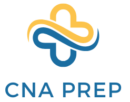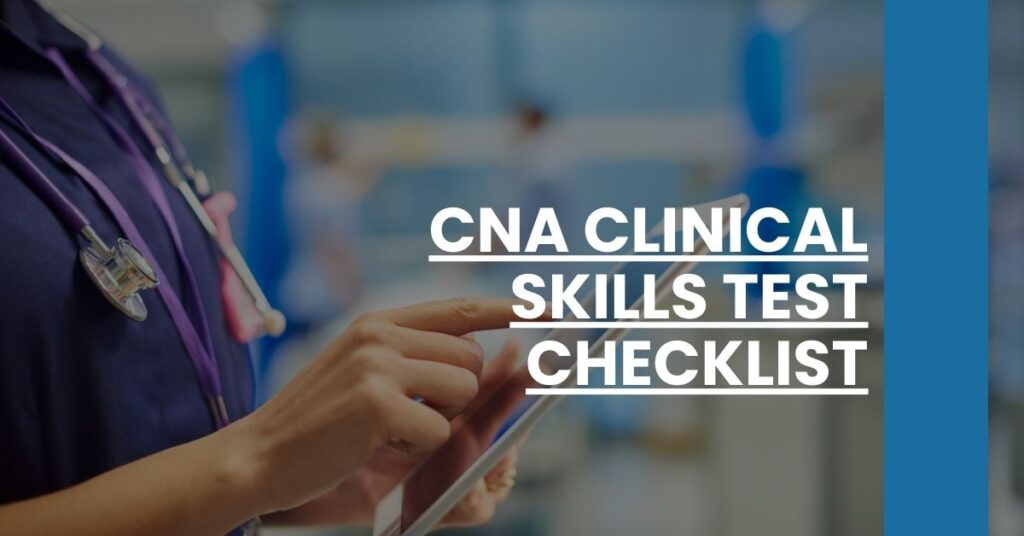Master the CNA clinical skills test checklist with our expertly crafted guide to ensure you’re fully prepared.
- Tailored Preparation: Specific tactics for acing each component of the CNA clinical skills exam.
- Skill Proficiency: Straightforward breakdown of essential skills to demonstrate during CNA testing.
- Test Day Insider Tips: Proven strategies for managing nerves and executing skills flawlessly on test day.
Successfully navigate your CNA clinical skills test checklist with confidence.
Understanding the CNA Clinical Skills Test
As a Certified Nursing Assistant (CNA), you will be tasked with various duties that demand both knowledge and skill. One of the vital milestones on your journey is the CNA clinical skills test. This test is a hands-on examination that assesses your ability to perform nursing tasks safely and effectively. Unlike written tests, the clinical skills portion requires practical demonstration of your competencies in real-world scenarios.
The Significance of the Test
The clinical skills test holds significant weight in your certification process. It is your opportunity to showcase that you not only understand the procedures but can also apply them competently.
Breakdown of the Clinical Skills
During the test, you will be evaluated on several essential skills such as:
- Infection Control: Ensuring a sterile environment and reducing the risk of healthcare-associated infections.
- Patient Care: Core activities involving direct physical assistance, including bathing, dressing, and toileting.
- Vital Signs Measurement: Accurately taking and recording blood pressure, pulse rate, and respiratory rate.
- Mobility Assistance: Safely helping patients move, transfer, and walk.
Proving Your Proficiency
Properly executing these tasks requires a mix of technical ability and the soft skills crucial for patient interaction. Your evaluators will be looking for you to demonstrate these abilities within the framework of the test’s specific criteria.
Indirect Care Components
Remember, indirect care is equally vital in the CNA clinical skills test. It encompasses the communication and respect you exhibit towards patients, ensuring their dignity and rights are maintained throughout your care.
Make sure to internalize every step and procedure of the CNA exam to ease your mind and prepare thoroughly before test day.
The CNA Clinical Skills Test Format
The test format is consistent yet unpredictable. It includes a selection of skills you need to perform under an evaluator’s observant eye. While it is certain you will be tested on a predetermined number of skills, usually five, the specific skills you will perform are a mystery until the test begins. This stealth approach tests your readiness for any situation, an attribute key to the nature of a CNA’s daily work.
What’s on the Test?
Each skill on the CNA clinical skills test checklist is an integral function of your responsibilities. These may include, but are not limited to:
- Handwashing: An essential infection control practice for every healthcare professional.
- Personal Protective Equipment (PPE) Usage: Proper donning and doffing techniques to protect both you and the patient.
- Patient Privacy: Shielding the patient during personal care tasks.
A Look at the Clock
You will also be racing against the clock – each task has a time limit, which emphasizes the need for both speed and precision in your performance. Preparation is key, as is practicing the actual flow of tasks as they might unfold in the exam.
Understanding the particularities of the format will enable you to adapt quickly on test day. The availability of practice tests and resources can provide you with a realistic simulation of the test experience, and you can find an abundance of materials designed for this purpose at the CNA Plus Academy.
On the Day of The Test: What to Expect
The day of the test is a culmination of all your hard work and preparation. It’s natural to feel a surge of nerves, but knowing what to expect can help you navigate the experience with confidence.
Check-In Process
Upon arrival, you’ll engage in a check-in process. Arrive early to allow yourself time to settle and focus. You’ll likely need to provide identification and complete preliminary paperwork.
Managing Nervousness
It’s normal to feel anxious, but remember, your anxiety can be controlled with deep breathing and positive visualization. Keep in mind that preparation leads to performance. Your extensive practice with the CNA clinical skills test checklist is about to pay off.
Test Environment
Expect to perform in an environment that mimics a clinical setting. Your evaluator will be present, observing your every move – quite literally. Perform each task as if you were in the workplace; professional, focused, and patient-centered.
If you need additional insight into the actuals test environment and what is expected of you, resources from testing providers such as Prometric can give you a clearer picture of the day’s layout.
As you navigate this rite of passage, take heart from your preparation: each study session was a step towards proficiency, every role-play a rehearsal for success. Now, you stand ready to turn your knowledge into demonstrable skill and take the next step towards a rewarding career as a CNA.
The Checklist: Essential Clinical Skills
The CNA clinical skills test checklist you’ve prepared for is a step-by-step accompaniment ensuring you don’t miss anything vital. This comprehensive checklist is your road map through the skills you need to master to pass the CNA clinical test. Familiarize yourself with these skills until they become second nature.
Infection Control Procedures
When it comes to infection control, precision can be life-saving. Prioritize these protocols to protect both yourself and patients from potential infections.
- Handwashing: The fundamental skill of hand hygiene cannot be understated. Ensuring proper technique and duration are key.
- Use of Personal Protective Equipment (PPE): Correctly donning and removing gloves, gowns, and other barriers is crucial to maintaining a sterile environment.
- Safe Disposal of Contaminated Supplies: Understanding and executing appropriate disposal methods to minimize infection risks.
Patient Care Techniques
The cornerstone of quality care is providing comfort and support with proficiency. The following are some basic yet vital skills you’ll need to demonstrate.
- Assisting with Mobility: This includes safely moving a patient from bed to a chair or aiding them with walking.
- Feeding Patients: Show you can help a patient eat, taking special care with those who have difficulty swallowing.
- Personal Hygiene: Competence in bathing and grooming practices indicates respectful, dignified patient care.
Safety and Emergency Protocols
Being prepared for the unexpected is part of the job. Your quick thinking and response can make a significant difference in a patient’s outcome.
- Heimlich Maneuver: Responding promptly and effectively to a choking incident is a vital skill.
- Fire Safety: Understanding the procedures to follow in the event of a fire is crucial for ensuring patient safety.
- Fall Prevention: Knowing how to prevent falls and how to respond in case of a fall is essential for protecting patients.
Recording and Reporting Procedures
Clear and accurate communication is what allows for continued care and successful outcomes.
- Charting Vital Signs: Record blood pressure, temperature, pulse, and respiration rates accurately for patient records.
- Reporting Changes: Be ready to note any significant changes in a patient’s condition to nurses or doctors.
Common Pitfalls and How to Avoid Them
Awareness of common mistakes can be as crucial as knowing the right steps to take. Here are a few to keep in mind as you practice:
- Inattention to Detail: Rushing or skipping steps can lead to critical errors. Always be thorough in your procedures.
- Poor Communication Skills: Interacting with patients and team members effectively is as important as technical skills.
- Lack of Organization: Develop a methodical approach to tasks to ensure all steps are completed in order.
By recognizing these potential pitfalls, you ensure a more refined approach to your exam, bolstering your chance of success. Consult verified sources such as the National Nurse Aide Assessment Program (NNAAP) to avoid misinformation which could lead to errors.
Practice Makes Perfect: Utilizing Mock Exams
Practice does more than just improve skills; it builds confidence. Mock exams mirror the test environment and conditions, providing the perfect opportunity to iron out any kinks in your performance.
- Familiarize Yourself with the Format: Knowing what to expect eases anxieties and lets you focus on demonstrating your skills.
- Identify Weak Areas: Continuous practice helps you recognize and strengthen skills you might not be as confident in.
The Prometric website provides an extensive range of practice materials and information to help you get comfortable with the exam format.
Conclusion: Final Thoughts and Encouragement
Your journey towards becoming a CNA is about to reach an exciting milestone. Each step you have taken so far, from studying to completing practical tasks, has led you to this moment. Remember that the CNA clinical skills test checklist is more than a series of tasks – it is a reflection of your dedication to patient care. Keep focused, practice proactively, and approach the test with the assurance that you are prepared. You have the skills and knowledge needed to succeed. Good luck!

